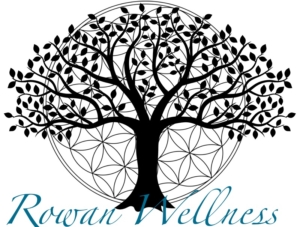Head – Heart Congruency
(and Why it Matters)
1. The Importance of Congruency between Head and Heart
Head – heart congruency must be attained in order to successfully embrace personal healing and development. The harmony and alignment of our thoughts, feelings, and behaviors are referred to as congruency. When our mind and heart are in harmony, we can make wiser choices, control our emotions, and make progress in our healing journey.
The heart reflects our emotions, instincts, and more primal needs while the head frequently depicts our logical reasoning and rational decision-making in the context of addiction. When there is a disconnect between these two elements, we may struggle to make beneficial changes in our lives and feel conflicted inside. As a result of this dissonance, people may turn to addictive activities in order to find comfort, pleasure, or an escape from their inner turmoil. However, it doesn’t have to manifest as “addiction” per se; self-sabotaging actions or ineffective communication can also be an indictor of head-heart misalignment.
People can develop more self-awareness, comprehend their motivations, and identify the triggers that contribute to their addictive or self-sabotaging behaviors by establishing head – heart congruency. This alignment promotes the growth of healthy coping strategies, emotional control, and a greater sense of self, ultimately assisting in the process of addiction recovery and furthering the process of inner healing, particularly where the survival archetypes are involved (the survival archetypes being the child, the saboteur, the prostitute, and the victim.) Thus congruency becomes a vital component of any shadow work being undertaken.
A sense of honesty and integrity in our life is encouraged by congruence between the mind and the heart. We can develop stronger bonds with others, enjoy life more, and achieve long-lasting enjoyment when we live in accordance with our genuine selves and values. The perseverance and fortitude needed to face any barriers to inner soul healing are fostered by this inner harmony, allowing one to embrace a more balanced, meaningful life.
“Addiction is an act of rebellion against the self”
– Caroline Myss
2. Caroline Myss’ Perspective on Addiction and Recovery: The Papa, Mama, and Baby Bear Analogy
Caroline Myss’ “Papa, Mama, and Baby Bear” metaphor demonstrates head – heart congruency and provides a unique perspective on addiction specifically and self-sabotaging behaviors in general. This comparison highlights the significance of comprehending and addressing the multiple layers of addiction in order to achieve long-term sobriety and personal healing.
Papa Bear: The Core Wound
According to Myss’ analogy, the Papa Bear stands for the fundamental emotional and spiritual problem that underpins addiction and perhaps other self-sabotaging behaviors. This core wound is frequently the result of unresolved trauma, traumatic experiences as a child, or difficult life situations that left a lasting impression on a person’s psyche. An individual can start to heal and transform the underlying reason of their addictive behavior by recognizing and treating this core wound.
Mama Bear: The Emotional Patterns
The emotional inclinations and beliefs that have emerged as a result of the core wound are represented by the Mama Bear. These habits frequently take the form of destructive communication (to self or others), constricting beliefs, and self-destructive actions that feed the addictive cycle. Breaking away from self-sabotaging behaviors and embracing personal growth require recognizing and challenging these habits.
Baby Bear: The Addictive Behavior
The Baby Bear is a representation of the destructive behavior itself, which is utilized to cope with the suffering brought on by the fundamental wound and emotional patterns. Substance abuse, compulsive eating, gambling, and other damaging behaviors that only temporarily mask the underlying problems may be examples of this behavior. Often Baby Bear expresses through the throat chakra, which sit in between the head and heart.
All three facets of addiction must be addressed in order to experience long-lasting healing and personal development: the core wound (Papa Bear), emotional patterns (Mama Bear), and addictive behavior (Baby Bear). By embracing emotional, mental, and spiritual factors, people can strive toward healing and altering their life from a holistic perspective.
In order to overcome addiction and promote personal growth, Caroline Myss highlights the significance of harmony, or head – heart congruency. We may effectively address the Papa, Mama, and Baby Bear layers of addiction and bring about long-lasting change in our lives by harmonizing our ideas, feelings, and behaviors. By empowering people to develop self-awareness, emotional fortitude, and a stronger connection to their real selves, this holistic approach to recovery paves the path for a more well-balanced, satisfying existence.
“The soul always knows what to do to heal itself. The challenge is to silence the mind.”
– Caroline Myss
3. Achieving Head – Heart Congruency: Strategies and Tools
When we are struggling with self-destructive behaviors – addiction being but one of many self-sabotaging behaviors – it’s important to identify and heal the root cause(s) of such behavior. This is an important step often missed in recovery programs. It’s not enough to just identify the behavior and employ self-control strategies to overcome it; such an approach requires a lifetime of “battle” mentality, often creating rigidity, depleting the core energetic systems, and stunting further progress along the healing path. For some, the fight to maintain control over addictive or other destructive behaviors becomes yet another addiction, the addiction to maintaining “control.” When it comes to soul growth and evolution, we must maintain flexibility and openness and this can only happen in addiction recovery when the core wound(s) are healed.
a. Self-Awareness and Reflection
Developing self-awareness is the first step towards congruency. We can better comprehend the causes of our addictive behaviors by becoming more aware of our thoughts, emotions, and habits. Regular introspection, journaling, and mindfulness exercises can all be used to uncover an individual’s fundamental wound (Papa Bear) and the emotional patterns (Mama Bear) that fuel their addiction.
b. Emotional Expression and Release
Healing and reaching congruence depend on our ability to feel and express our emotions. People can start to free themselves from the emotional patterns that underlie their addictive behaviors by acknowledging and letting go of suppressed feelings. Talk therapy, art therapy, writing, dancing, and engaging in physical activities are all methods for expressing and letting go of feelings.
c. Cognitive Restructuring
The process of cognitive restructuring is recognizing and altering harmful thought patterns and beliefs that support addiction. People can develop a more positive mindset that promotes healing and personal development by swapping out self-defeating thoughts with more powerful ones. Positive affirmations, visualization exercises, hypnosis, and cognitive-behavioral therapy (CBT) can all be used to reframe limiting beliefs and encourage a more impartial viewpoint.
d. Building a Support System
A solid support network is essential for establishing congruency and breaking an addictive cycle. Making connections with people who go through the same things and have comparable experiences may be extremely insightful, encouraging, and hold you accountable. Support groups, therapy, and dependable friends or family members can provide a secure setting where people can vent their feelings, tell their stories, and get advice as they work toward recovery.
e. Developing Healthy Coping Mechanisms
For long-lasting change, unhealthy coping mechanisms must be substituted for addiction behaviors. People can investigate a range of practices and activities that support emotional resilience and well-being, including yoga, exercise, hobbies, and activities that increase a feeling of meaning and purpose.
f. Spiritual Growth and Connection
A strong foundation for healing and personal development can be provided by developing a closer connection to one’s spiritual beliefs and ideals. People who engage in practices like prayer, meditation, mindfulness, or being in nature can connect with their inner wisdom and find the strength they need to overcome the difficulties posed by addiction.
People can attempt to achieve head – heart congruency by adding these techniques into their recovery process. This will eventually pave the way for long-lasting healing, personal development, and a more contented existence.
“Your biography becomes your biology.”
– Caroline Myss
4. The Role of Spirituality in Recovery
Many people find that their spirituality is an important part of their recovery and healing processes because it provides them with a source of support, direction, and hope as they work towards healing and personal development. People can get a number of advantages that aid in their addiction recovery by fostering a stronger connection to their spiritual ideas and values. Here are some ways that spirituality might aid in the healing process:
a. Providing a Sense of Purpose and Meaning
Long-term healing depends on a person’s ability to discover a sense of meaning and purpose in their life, which can be achieved through spirituality. People can gain a wider perspective that provides hope, drive, and direction during trying times by connecting to a greater power or a set of ideals that transcend their present situation.
b. Developing Inner Strength and Resilience
A spiritual connection can provide people the inner fortitude and resiliency they need to cope with the difficulties of addiction and recovery. People can find the calm, comfort, and self-compassion they need to persevere through the ups and downs of the recovery process by drawing on their spiritual beliefs.
c. Encouraging Forgiveness and Self-Compassion
Self-compassion and forgiveness are frequently emphasized in spirituality as being essential for healing and personal development. People can release the emotional burdens that frequently contribute to addiction and make room for healing and transformation by learning to let go of guilt, shame, and self-blame. Ho-oponopono can be an invaluable technique to employ.
d. Fostering a Sense of Connection and Community
Numerous spiritual practices and traditions place a strong emphasis on community and connection, which can be quite helpful for people going through recovery and healing. An encouraging network that provides support, accountability, and a sense of belonging can be formed by individuals participating in spiritual communities, attending services, or engaging in common practices.
e. Promoting Personal Growth and Self-Discovery
Inspiring people to delve deeper into their inner selves and evolve personally, spirituality can also act as a catalyst for self-discovery and personal development. People can develop self-awareness, emotional intelligence, and a stronger feeling of empathy and compassion for themselves and others through techniques like meditation, prayer, or contemplation.
f. Offering Tools and Practices for Emotional Regulation
Many spiritual practices, including breathwork, mindfulness, and meditation, can give people the skills and resources they need to manage their emotions and deal with stress, anxiety, and other difficulties that may emerge during the healing process. People can improve their emotional well-being and create healthier coping skills by implementing these techniques into their daily life.
By giving people a sense of direction, inner strength, and a connection to a caring community, spirituality can play a crucial role in achieving head – heart congruency and thereby fueling the healing process. People can achieve long-lasting healing, personal development, and a more rewarding life by integrating spiritual practices and ideals into their recovery process.
“Healing is an art. It takes time. It takes practice. It takes love.”
– Caroline Myss
5. How to Apply Caroline Myss’ Teachings to Your Recovery Journey
The teachings of Caroline Myss place a strong emphasis on the role that spirituality, self-empowerment, and congruence play in the healing process. You can experience significant personal growth and transformation by incorporating her wisdom and insights into your process of recovering from addiction. Here are some ways to incorporate Caroline Myss’ principles into your healing process:
a. Acknowledge the power of your choices
Realize that you have the ability to make decisions that will help or hurt your recovery. You can start making more mindful, healthier decisions that are consistent with your beliefs and objectives by accepting responsibility for your actions and decisions.
b. Establish congruency between head and heart
Congruency between your thoughts, feelings, and behaviors is something you should strive towards. Practices like journaling, mindfulness, and meditation can help you become more self-aware. You should also look for any areas in your life where there might be inconsistency. In order to address any underlying issues and create techniques for bringing your ideas, feelings, and behaviors into harmony, seek professional assistance, such as therapy or counseling.
c. Embrace Myss’ ‘papa, mama, and baby bear’ analogy
Use the “papa, mama, and baby bear” analogy to comprehend and deal with the various facets of addiction. Recognize the psychological, emotional, and spiritual aspects of your addiction and look for the right resources and assistance to deal with each one. This could involve getting medical help, going to counseling, joining a support group, or practicing religion.
d. Develop a spiritual practice
Explore spiritual practices and ideas that speak to you and incorporate them into your healing process. This can entail doing some meditation or praying, going to religious events, or getting outside in nature. Regularly practice these techniques to develop inner tranquility, resiliency, and a sense of connectedness to a higher force or purpose.
e. Build a supportive community
Be in the company of people who support your recovery and who have similar values to you. This can entail taking part in sober activities, attending spiritual events, or joining support organizations. Creating a solid support system can offer inspiration, responsibility, and a sense of community.
f. Practice self-compassion and forgiveness
Recognize your past mistakes and any suffering they may have caused, but also that you have the ability to learn from them and move on. By letting go of guilt, shame, and self-blame, you can practice self-compassion and forgiveness. Instead, concentrate on fostering self-love and acceptance.
g. Focus on personal growth and self-discovery
Throughout your healing process, make an effort to grow as a person and find who you are. Think back on your experiences, draw lessons from your blunders, and have an open mind to fresh ideas and viewpoints. Accept obstacles as chances for development and change.
Remember, all of our experiences in life pave our soul’s path towards greater healing, coherence, and evolution. As such, it’s important that we not get bogged down in past “mistakes” nor over-invest in expectations for the future. Remaining open and curious in the present moment gives us the greatest chance for successfully achieving our soul’s purpose.
You can develop a greater feeling of self-awareness, personal empowerment, and spiritual connection by incorporating Caroline Myss’ teachings into your journey of addiction recovery. You can get help from these components, along with a supportive network and qualified advice, to overcome addiction and bring about long-lasting transformation.
“To heal illness, begin by restoring balance.”
– Caroline Myss
Applying Caroline Myss’s teachings into your battle against addiction can have a profoundly positive impact on your personal development, healing, and transformation. You can lay a solid foundation for long-lasting transformation by emphasizing harmony between the mind and the heart, acknowledging the complexity of addiction, and incorporating spirituality into your recovery journey. Additionally, cultivating self-compassion, forgiveness, and a strong sense of community can offer you the emotional fortitude and connection need to face the difficulties of rehabilitation. As you set out on this path, keep in mind that self-discovery and personal growth are continual processes that call for self-love, patience, and commitment.
References
- Myss, C. (2001). Anatomy of the spirit: The seven stages of power and healing. Harmony. Link to author’s webpage (Accessed: April 8, 2023)
- Myss, C. (2003). Sacred contracts: Awakening your divine potential. Harmony. Link to author’s webpage (Accessed: April 8, 2023)
- Myss, C. (2013). Archetypes: Who are you? Hay House, Inc. Link to author’s webpage (Accessed: April 8, 2023)
- Mate, G. (2010). In the realm of hungry ghosts: Close encounters with addiction. North Atlantic Books. Link to author’s webpage (Accessed: April 8, 2023)
- Kabat-Zinn, J. (2005). Wherever you go, there you are: Mindfulness meditation in everyday life. Hachette Books. Link to author’s webpage (Accessed: April 8, 2023)
Schedule a Session With Me
If you’d like to go deeper in a supportive, healing environment, please visit my scheduling page.




